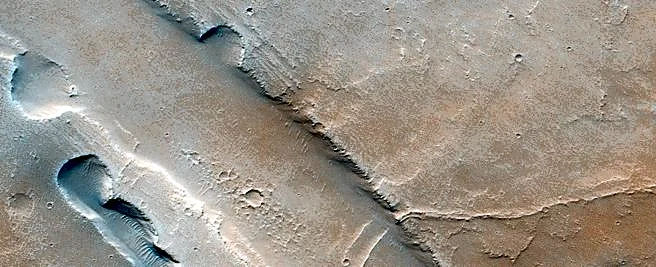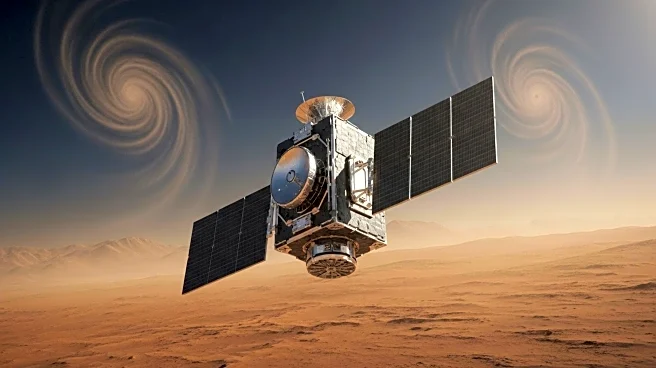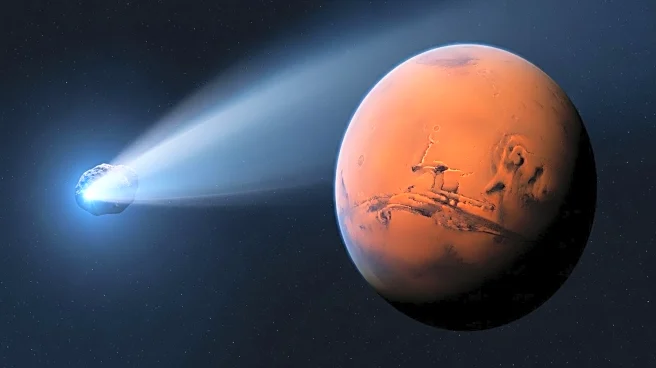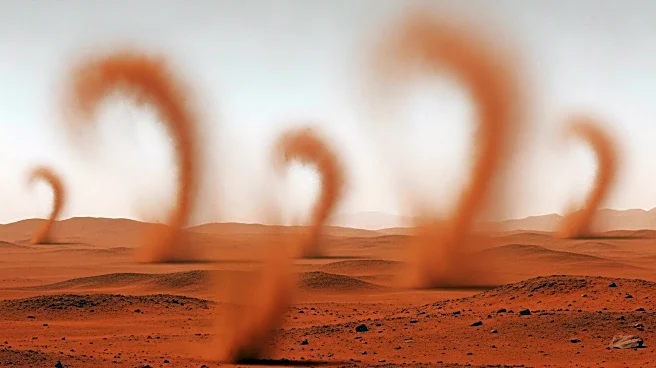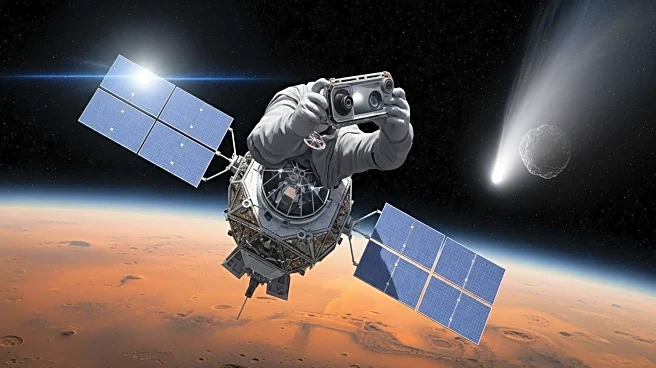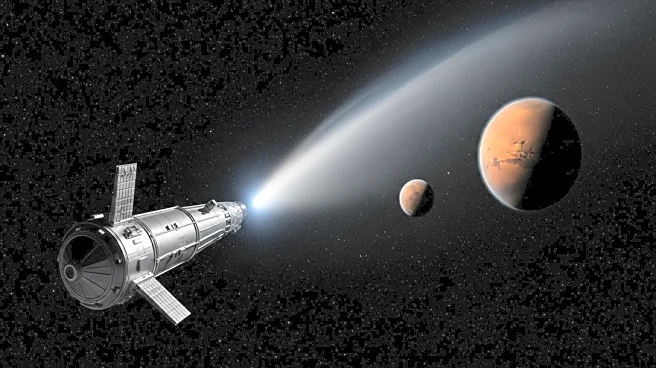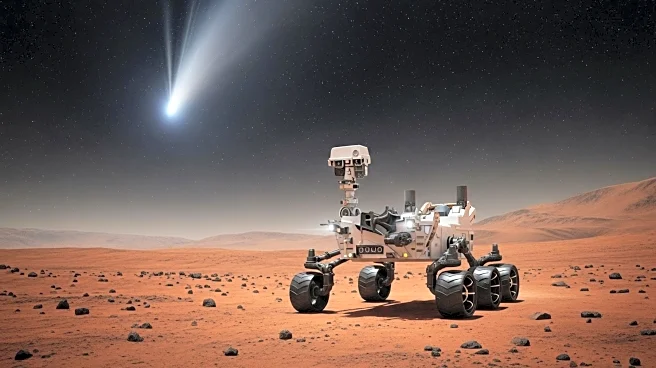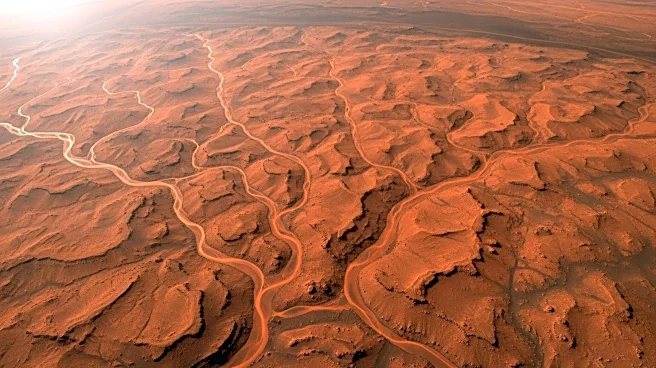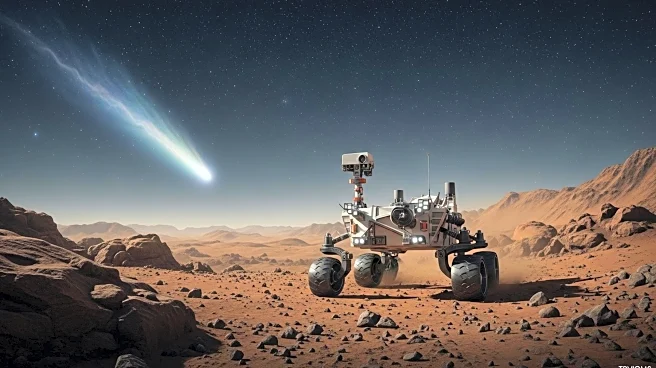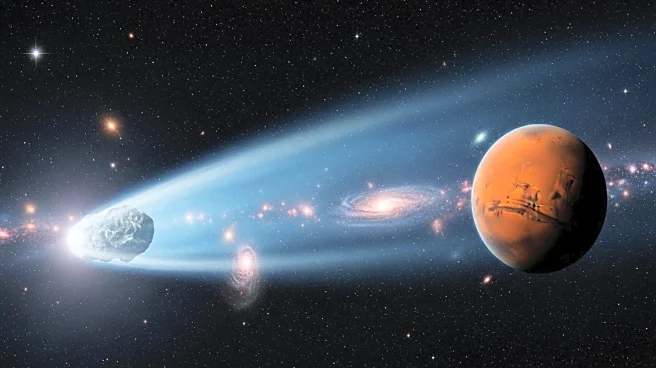What's Happening?
A new study published in Science Advances has revealed surprising insights into the wind patterns on Mars, using data collected by the European Space Agency's Mars Express and ExoMars Trace Gas Orbiter. Researchers, led by Dr. Valentin Bickel, have compiled a catalog of 1,039 dust devils, which are tornado-like whirlwinds visible due to Mars' iconic red dust. These dust devils move much faster than previously recorded, with speeds reaching up to 99 miles per hour. The study utilized machine learning to analyze orbital images, providing a detailed map of dust devil activity across Mars.
Why It's Important?
Understanding the movement of dust on Mars is crucial for planning future missions, both robotic and human. Dust devils play a significant role in lifting dust into the Martian atmosphere, affecting climate and weather patterns. This research provides valuable data for improving climate models, ensuring the safety and durability of future missions. The findings also highlight the importance of considering wind conditions when selecting landing sites for Mars missions, as dust accumulation can impact solar panel efficiency and mission longevity.
What's Next?
The study's findings will be used to refine climate models for Mars, aiding in the selection of optimal landing sites for future missions, such as ESA's ExoMars Rosalind Franklin rover, expected to land in 2030. Researchers will continue to update the dust devil catalog with new orbital data, providing a resource for mission planning. The insights gained from this study may also influence the design of future Mars missions, particularly in terms of solar panel maintenance and dust management strategies.
Beyond the Headlines
The study demonstrates the value of long-term datasets from multiple Mars missions, which are crucial for understanding the planet's climate dynamics. The research also highlights the potential impact of proposed NASA budget cuts on the availability of such datasets. By studying Mars' unique conditions, scientists can gain insights into atmospheric dynamics that may also apply to Earth, emphasizing the broader significance of planetary exploration.

